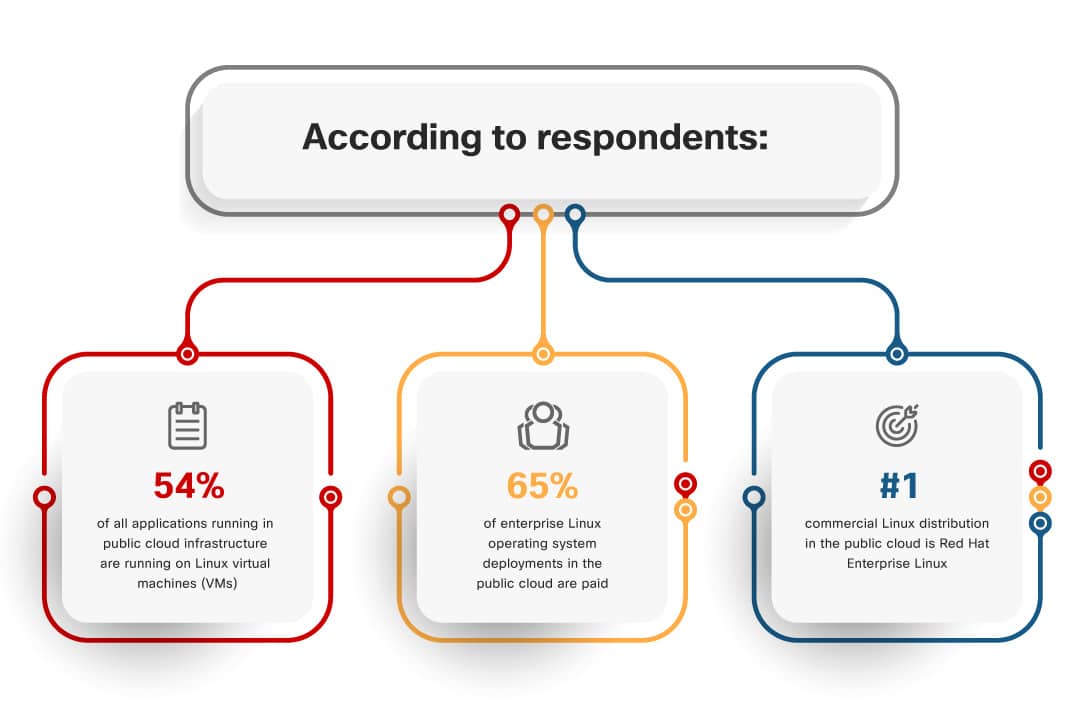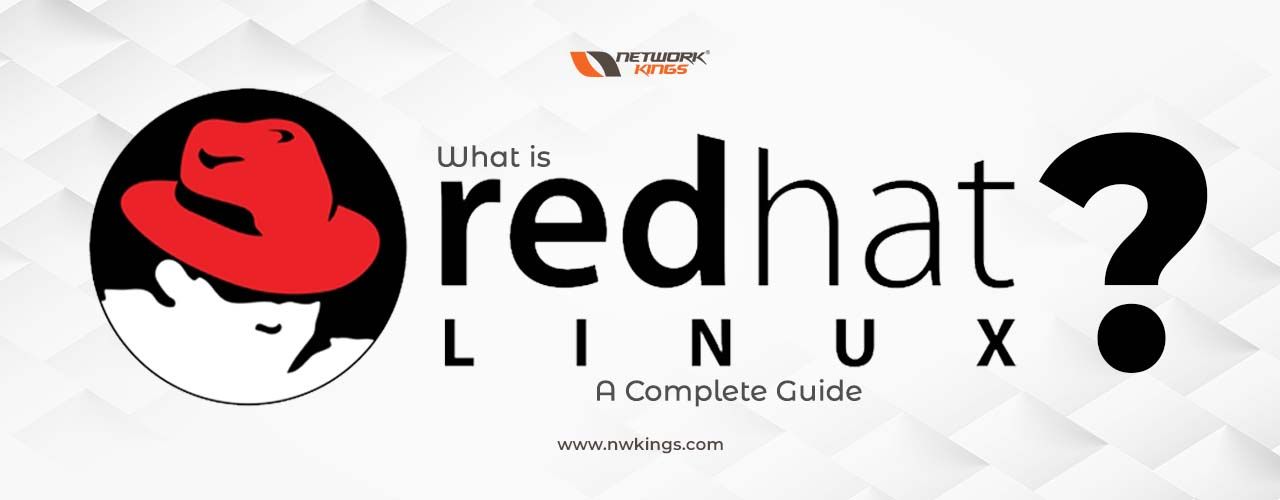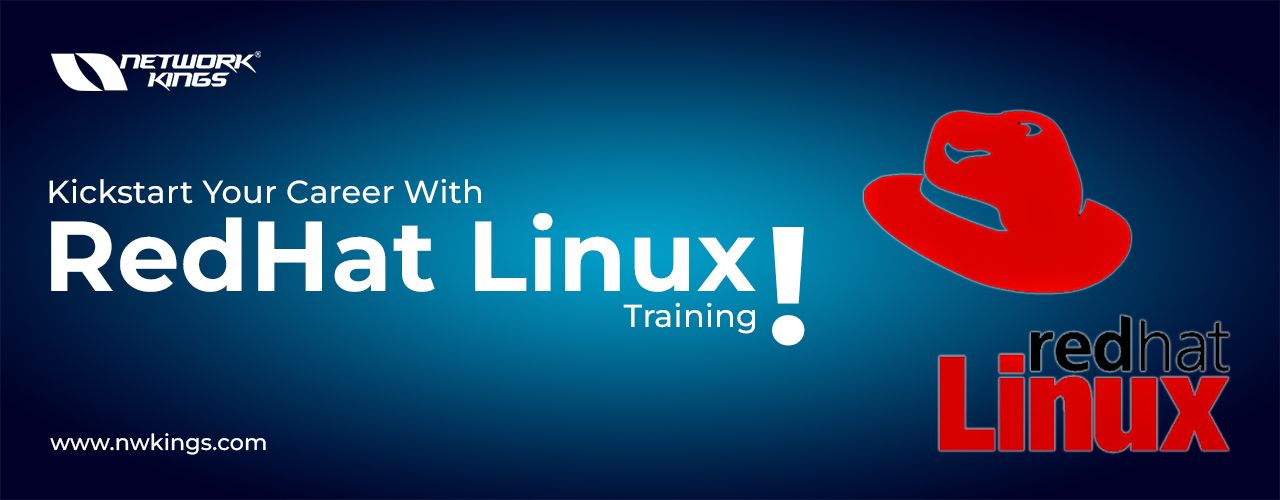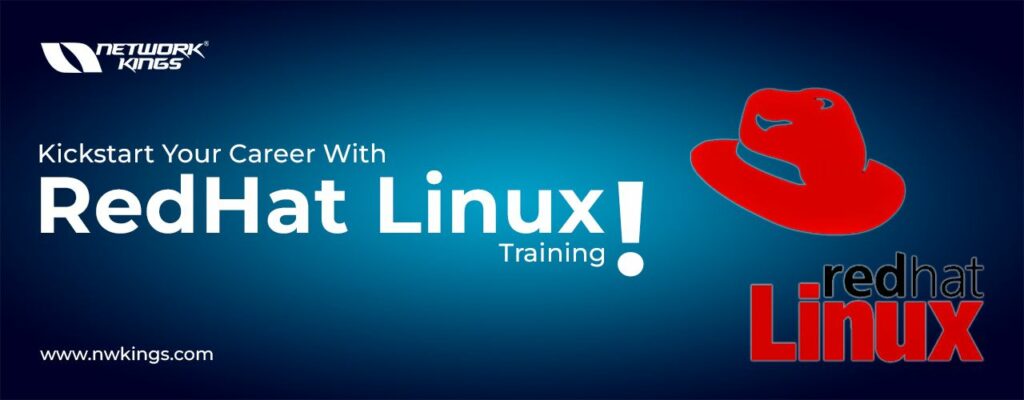
Let’s get familiar with what is RedHat Linux. We have got a lot planned here for you – let us jump right in and explore what this particular operating system entails, where it stands among the various other distributions of Linux out there and how its platform works as a server. Whether you are just getting into using computers or already have loads of tech experience under your belt, we reckon there will be something interesting in store for all types of people. Sounds good? Let us get stuck in then!
Understanding What is RedHat Linux and Its Operating Systems
It is impossible to deny that RedHat is one of the most popular and widely used operating systems when it comes to Linux. This is because users in various industries can exploit its many advantages and features, making it an attractive option for them. Knowing how RedHat Linux operates at a basic level can help people gain maximum benefit from using this OS.
To start with, let us understand that Linux functions as an open-source operating system which lacks any single person or entity governing it – instead, anyone has permission to edit and use the code in any way they wish!
RedHat Linux is a great option for those seeking flexibility and adaptability; it can cope with changing user needs and includes an extensive range of software packages as part of its core offering, making customisation quick and easy. What’s more, developers can produce their applications tailored to specific requirements. It’s no wonder that RedHat Linux has become such a popular choice among businesses and consumers alike – it offers so much in terms of usability! Plus there are plenty more features besides these key benefits which make this operating system stand out from the crowd.
It’s no wonder RedHat Linux is such a popular choice for those after an efficient and reliable operating system; not only does it support multiple languages – allowing you to customise your system to whatever language best suits the requirements of your team or clients, but also provides users with peace of mind that their data remains safe even when accessed from remote locations.
Its advanced security measures provide extra assurance around confidential information as well as keeping any potential malicious threat actors away through regular updates. Knowing how this all works can help unlock its full capabilities in no time at all!
Profiling RedHat Linux: A Detailed Overview
Using RedHat Linux is becoming increasingly popular as an open-source operating system developed by the company Red Hat Inc. The OS draws its power from the mighty Linux kernel and has shown itself to be a great choice for businesses seeking reliable, secure – yet cost-effective server solutions across all industries ranging from banking and government through healthcare to aerospace. With such extensive application scope, it’s no wonder why more organisations are turning towards this particular platform. But what makes it so special you might ask; well one need only look at its feature set which just oozes potential!
Straight out of the box, users can enjoy support for languages such as C, C++, Java, Python and Ruby. It even comes with enterprise-grade virtualization capabilities incorporating KVM (Kernel Virtual Machine) technology allowing you to run multiple guest systems on one physical machine without taking much of a toll in terms of performance.
Plus RedHat Linux has been built with comprehensive database access that’s compatible with PostgreSQL and MySQL – how cool is that? On top of all this it also offers formidable security solutions via its SELinux feature set; making sure your system remains safe from any external threats or attacks.
SELinux sets up a barrier between applications so malicious code running in one application can’t get to any other sections of the OS or network. This way organisations feel sure that their data is safe from external threats. When it comes to dependability and scalability, Red Hat Linux stands out among its peers. It’s got the edge over other operating systems of this type!
Using open-source technology published under the GNU General Public License (GPL) means organisations can customise their set-ups to fit their needs without compromising on compatibility or reliability. Plus, there are tools available for those who want more control over how they manage their server – giving them greater flexibility when it comes to managing resources. All in all, Red Hat Linux stands out as an excellent OS choice for businesses looking for a cost-effective but feature-packed approach which is capable of efficiently handling large amounts of users whilst providing secure protection against any malicious security threats.
Whether you’re seeking something powerful and robust enough to serve your enterprise or simply just need a basic operating system that’s easy to run from home – RedHat should be one of the first systems you consider!
The Inception and Evolution of RedHat Linux

RedHat Linux is a well-known operating system in the world of web and app development. Its success story stretches back more than two decades, with its popularity showing no signs of abating since first appearing on the scene way back in the early 90s. This all started when open-source supporters Marc Ewing, Bob Young and Shawn Maher got together to create this OS that could easily be shared as free software without any proprietary limitations – it was this concept which led RedHat Linux’s rise to greatness!
Over the years, RedHat has evolved drastically to provide support for a larger base of users and developers with different requirements from their operating systems. It now comes packaged with high-calibre features such as scalability, extensive security capabilities, dependable data center performance etc., thus making it one of the most secure, efficient and reliable OS out there at present.
Apart from providing facilities for open-source software development projects, this Operating System is also used commonly in virtualization environments to host applications and websites on servers or clusters of machines – which makes sense considering its incredible capacity to scale up according to user needs. This fact allows companies like Fortune 500 businesses to clutch onto cloud platforms (such as AWS or GCP) by migrating their existing infrastructure smoothly without any hiccups!
Moreover, Red Hat Linux offers users an effortless automation tool called Ansible; that helps automate mundane stuff including installations/configuration changes/application deployments over multiple devices simultaneously – speeding up standard operations significantly!
Undoubtedly these impressive lineup qualities are what make Redhat Linux so popular amongst global enterprises looking towards developing web apps quickly and easily – thereby creating success stories all around the world consistently every day!
RedHat Linux as an Open-source Software: The Benefits

RedHat Linux has become a hugely popular pick among businesses and people as their operating system. This is because of its vast range of features, compatibility with different apps and dependability. Being an open-source operating system, RedHat Linux provides many advantages over traditional proprietary software.
For instance, the availability of support from both official channels like the Red Hat website plus lots of unofficial sources is one such benefit. What’s more impressive about this OS is that you don’t have to pay for any sort of assistance – so it’s great value too!
Finding support for RedHat Linux is no issue with websites, forums, mailing lists and IRC channels on hand to assist users in need. This open-source operating system also allows you to personalise it according to your requirements – thanks to the source code being available at all times! With that said, making modifications yourself or utilising those of other people’s creations can certainly help improve functionality and performance as well as give others a chance to benefit from them too.
This customisation goes beyond just altering current features; users can even chuck in new tools and features that have been created by the user community.
Aside from this wide range of customisable options, open-source software has a major plus over proprietary alternatives when it comes to cost. Typically there’s no charge for downloading or using an OS program – while its counterpart likely requires payment for licensing fees or subscriptions. It almost sounds too good to be true – free cutting-edge technology? What other advantages come with open-source software?
What’s more, there are barely any limits on how much you can use the software without having to pay extra or face restrictions; this makes RedHat Linux a budget-friendly solution for both large businesses and individuals who need access to dependable tools without breaking the bank.
On top of its financial benefits, using RedHat Linux gives users entry to numerous strong security tools that cooperate with different standard applications such as firewalls and anti-virus programs – giving an added sense of calm when accessing online resources or executing monetary exchanges online. These additional safety parts give further defence against external risks – guaranteeing your information stays protected at all times!
Exploring Various Types of Linux Distros Available

As the open-source development of Linux started, many developers created their own versions of the operating system. Therefore, users now have various types of Linux to choose from depending on what they need and prefer. Red Hat Linux is one such popular version that has become highly sought-after because it’s a business-focused OS with ample functionality for enterprise use. This flavour provides better features than regular consumer editions of different distributions out there in the market.
Diving into the different sorts of Linux distros (shorthand for distributions) can offer you a better understanding of which alternative might be ideal for your circumstances. Depending on what you need, it’s possible that you’d rather have something simpler to use or maybe a version with advanced features. When analyzing all the possibilities available there are usually two main categories: desktop and server versions. The workstation edition will provide you with an easy-to-use graphical user interface suitable for standard computing tasks like running your office programs, playing video games or carrying out video editing operations – so why not give them ago?
Whilst these usually cater for multiple user accounts, they don’t have any of the specialised server characteristics like remote access control or shared storage. What’s more, in terms of security there are no encryption protocols and authentication systems which would be essential if you’re hosting sensitive data on a server. Server editions are optimised to host software such as web services over LANs (Local Area Networks) and databases with lots of users involved – so they come bundled with extra safety features including those already mentioned plus backup programs just in case something goes wrong with your system or it gets corrupted due to virus invasion; this makes them much better than their workstation equivalents.
To top that off, administrators often get extra admin tools where IT personnel can modify all settings remotely instead of fiddling about configuring each single machine at different points throughout an install process eating away valuable time and resources.
Why RedHat Linux Stands Out Among Other Distros
It’s no surprise RedHat Linux is one the favourite operating systems among Linux users – its features, secure environment and extensive range of support services make it a clear winner. First of all, with SELinux for better protection from threats and yum package manager as an installation and maintenance tool plus Virtualization technologies like KVM or OpenStack incorporated into its platform; It becomes ideal to be used within businesses. All these factors combine which results in making this OS such a popular choice!
RedHat Linux makes for a great choice if businesses are searching to construct their enterprise system on a dependable platform. To provide customers with the certainty of security, RedHat offers various grades of membership that enable updates and safety fixes as well. Subscribers also have privileged access to pre-checked patches so they can retain their systems protected without devoting hours trawling around online in search of solutions.
Also, to top it all off, users get comprehensive technical support – this includes phone assistance if necessary alongside tutorials online and forums where one could find answers when drifting into any problems or looking for help grasping how the system runs. All taken together, these features make RedHat Linux stand out amongst other distros while granting business operations both stability and robustness which is essential in an operating system constructed at a professional level. What do you think?
RedHat Linux as a Server Platform: Advantages and Features
RedHat Linux is one of the most popular server operating systems, extensively used by web-hosting companies and corporate data centres. It’s renowned for its reliable performance, extensive user assistance and security attributes that make sure your information remains secure. Red Hat Linux provides several advantages, all of which aid in making it stand apart from other server platforms. Considering stability first off; due to the main components being open-source software, you can easily fix any technical problems or issues not having to rely on proprietary updates given out by vendors!
When it comes to security, RedHat Linux is top-of-the-line. It utilizes an advanced safety system which means only authorised individuals are allowed access to sensitive data or files stored on this particular operating system. This makes it a great solution if you’re wanting something for hosting sites, managing corporate networks and more – perfect for businesses!
Not only that but as far as features go, there’s no shortage with RedHat Linux; they’ve got all sorts of different tools and utilities plus support systems so configuring your servers for whatever task is needed can be done quickly and easily! Whether it be database management services or web server applications like Apache Nginx etc., RedHat provides users with a highly customisable option tailored perfectly to meet any organisation’s needs. What’s not to love?
What’s even more amazing about RedHat Linux is that there are plenty of pre-installed packages with a variety of tools, which make it super easy for those who aren’t experts to set up their servers right away. Not only that – but the vast selection of online and book documentation provided by RedHat makes learning how to handle your server a breeze, particularly if you’re just starting. To top things off, the customer service team at RedHat gets all thumbs up when it comes to providing help or sorting any problems you may come across while using this system – they know what they’re doing!
Using RedHat Linux for Business: Key Considerations
RedHat Linux is well-known for its dependability, security and adaptability. A whole host of big businesses have chosen it as their operating system – ranging from banks to software companies. Business owners and managers need to take into account a few key points when making use of RedHat Linux if they want the best possible choice for their organisation.
To start with, organisations ought to think about the expenses that accompany using RedHat Linux. It’s an open-source platform which means you won’t be charged anything to install or make use of it – but there may still be fees connected with installation and support services. How much would these additional costs add up to?
It’s recommended that businesses enlist professional help when it comes to software bugs or any security issues, as these can be rather complex for in-house IT personnel to tackle alone. Additionally, before making the switch to RedHat Linux there are some compatibility considerations business owners should take into account.
The majority of consumer applications including games and certain productivity tools won’t be accessible on this OS like they were with more traditional operating systems – however, a lot of popular enterprise apps have been reworked by developers specifically for RedHat Linux platforms. So if you’re looking at using one of those programs then you’ll need to check its availability first!
Thirdly, businesses need to be sure that their employees have the knowledge required for using RedHat Linux every day. As we said before, it’s an open-source platform which means customisation options are virtually boundless – but at the same time, a certain level of expertise is needed to make full use of all its features. If necessary you should think about providing training courses or hiring outside help if you plan on heavily personalising your version of Red Hat Linux to satisfy your organisation’s specific needs.
Finally, before making up your mind with regards to going ahead with Red Hat Linux, you ought to be certain that you understand the licensing agreement connected with it; this is especially vital if you intend on utilising third-party applications within your network or permitting users remote access from another device/computer. The license agreement details what rights do user possesses as well as how these rights are restricted by relevant laws existing in the current jurisdiction; so one shouldn’t take such matters lightly!
Comparing RedHat Linux with Other Linux Versions
When it comes to Linux distributions, Red Hat is one of the most widely used and well-respected options. It provides an extensive range of tools and applications which make it a great choice for servers, virtualization, cloud computing as well as other enterprise uses. Furthermore, its stability and security features are another big plus point – so how does RedHat stack up against rival versions?
Red Hat’s reputation for robustness and scalability means that it can be employed in many different settings; this means you don’t need to worry about whether your system will function properly no matter what kind of environment or usage pattern takes place – something that not all operating systems offer! So if you’re looking for reliability when running business-critical operations then RedHat just might be the solution you’ve been seeking.
RedHat Linux is a great choice for larger deployments, especially enterprise applications or web hosting services. The range of tools available makes it much easier to manage multiple systems at once, providing greater flexibility when things start getting complicated in the IT world. What’s more; RedHat also offers awesome support – every major update arrives automatically so you can be sure that your system won’t fall behind on security and technology advancements.
What’s more, RedHat also provides users with access to a massive library of online resources. These can be invaluable for businesses that need reliable support from their OS provider when they hit any snags or roadblocks. But the real clincher here is perhaps RedHat Linux’s advanced security features and tools which keep your data safe and sound at all times – external threats are denied entry by its built-in firewall while encryption ensures confidential files remain far away from prying eyes without authorization.
In conclusion, RedHat makes an ideal choice if you want a secure operating system that won’t let anything breach it – no matter how sensitive the information may be!
Prospects and Developments in RedHat Linux
Ever since RedHat Linux was launched in 1993, it has been a leader in open-source technology. It’s one of the most widely used distributions of Linux operating systems today. What makes it so popular is that its software tools, packages and repositories are available to everyone – developers and organisations alike love using them! The future looks bright for RedHat Linux; there are plenty of developing opportunities ahead!
With its regularly updated standard version, plus specialised variants such as Fedora, CentOS and ScientificLinux, RedHat Linux looks set to remain a major player in open-source software for many years. What’s more, there are lots of other developments currently being worked on that will make RedHat even more attractive to users who want cutting-edge technology. That includes better support for virtualisation platforms; enhanced security with SElinux; smoother integration with cloud computing services; and stronger web servers – all things which point towards a bright future for this leading OS.
In addition to these technical advances, RedHat continues to put a lot of resources into R&D projects that are dedicated towards better usability, stability, scalability as well as performance optimization and other aspects which will eventually affect user experience. This implies that users can anticipate regular updates with new features plus improvements upon the existing ones or bug fixes when needed. It should give customers some satisfaction knowing there is such commitment coming from an established company like RedHat concerning their selection of open-source platforms. So whether you’re searching for a dependable server solution or a simple-to-utilize operating system competent enough to deal with heavy workloads without any issues – maybe RedHat Linux could be your best pick!
Wrapping Up!
To conclude, RedHat Linux is a powerful open-source platform that has different distro types in the server setup. It gives users an easy-to-employ interface as well as enterprise-level security and stability. What’s more, it comes with plenty of other useful features which makes it apt for both developers and regular users alike. Because its package of services covers everything from straightforward websites up to intricate applications you can be sure that there isn’t any workload Red Hat Linux won’t take on!
Are you ready to take your career to the next level? Why not sign up for our RedHat Linux Program today? We provide a comprehensive and holistic approach when it comes to learning the ins and outs of this powerful operating system. You’ll gain an array of advanced skills capable enough for managing multiple systems, as well as getting familiar with installing, configuring and maintaining enterprise deployments in physical/virtualised computing environments or even in cloud services.
Our experienced tutors won’t leave you hanging; they’re here throughout the course guiding networking-related settings within Red Hat Enterprise Linux such as ad security configuration, performance tuning scripting and so much more. All that’s required from you is simply filling out an online form and then paying a fee – no fuss involved! Don’t delay any longer – enrol now and unlock new opportunities along with your career path!
Happy Learning!





